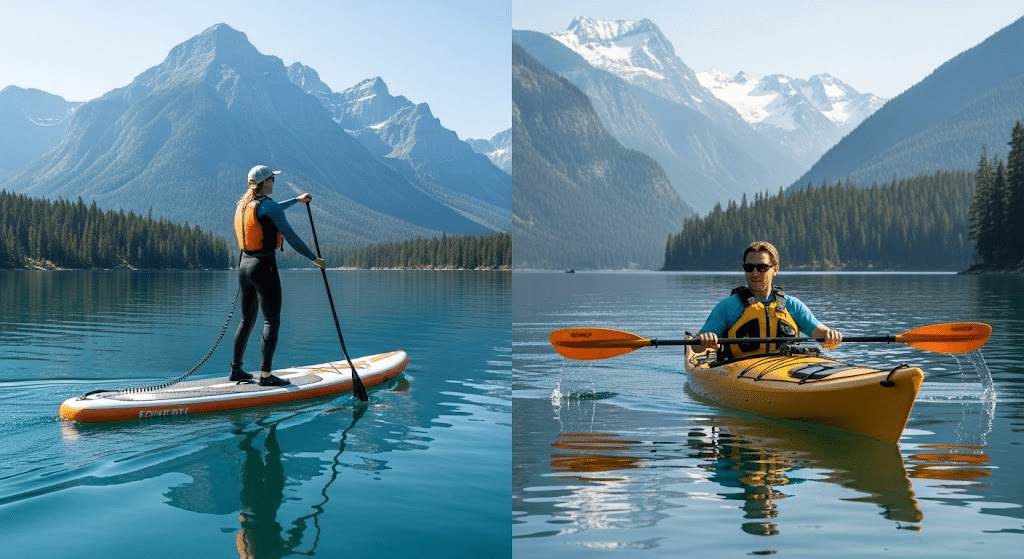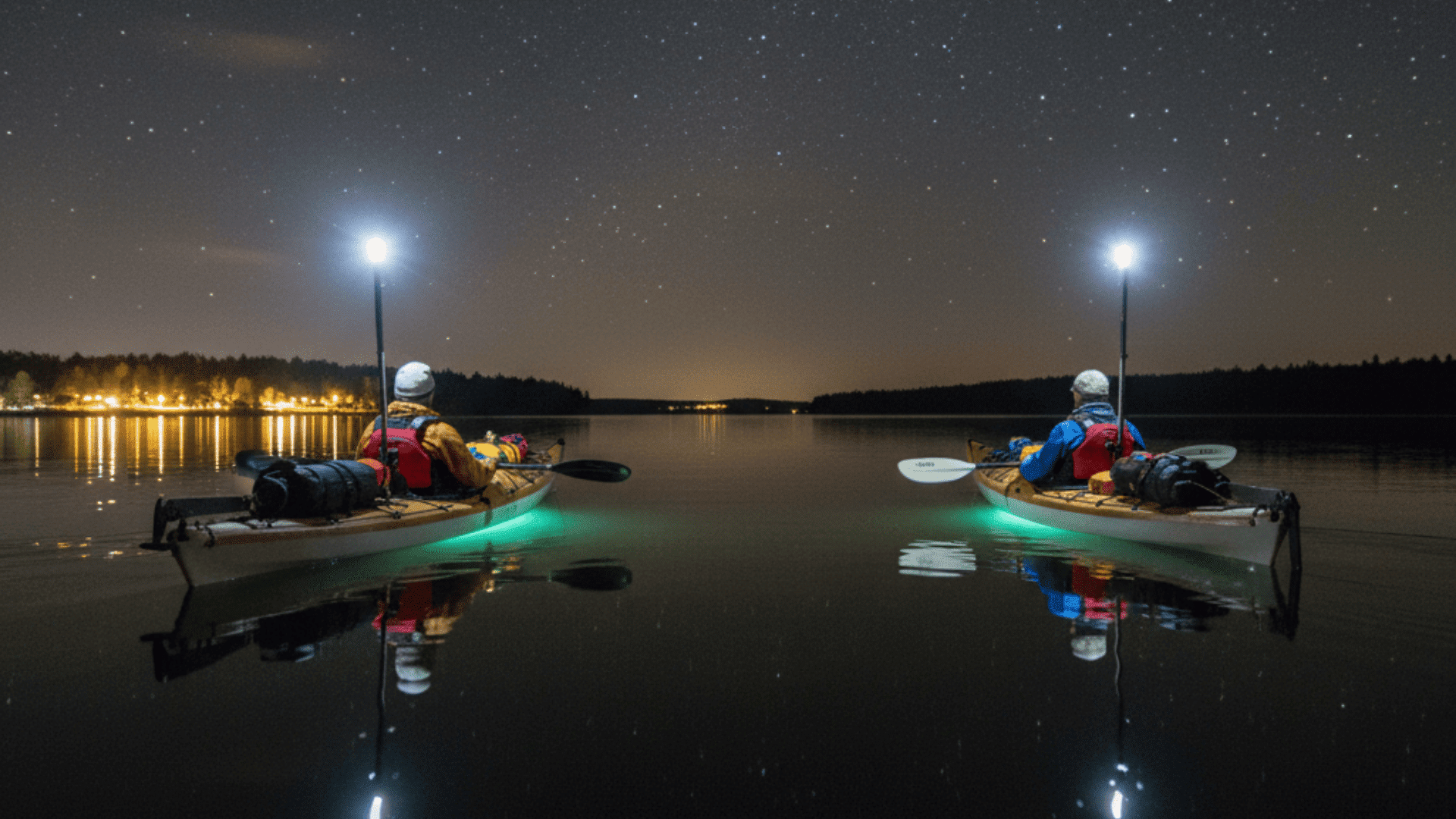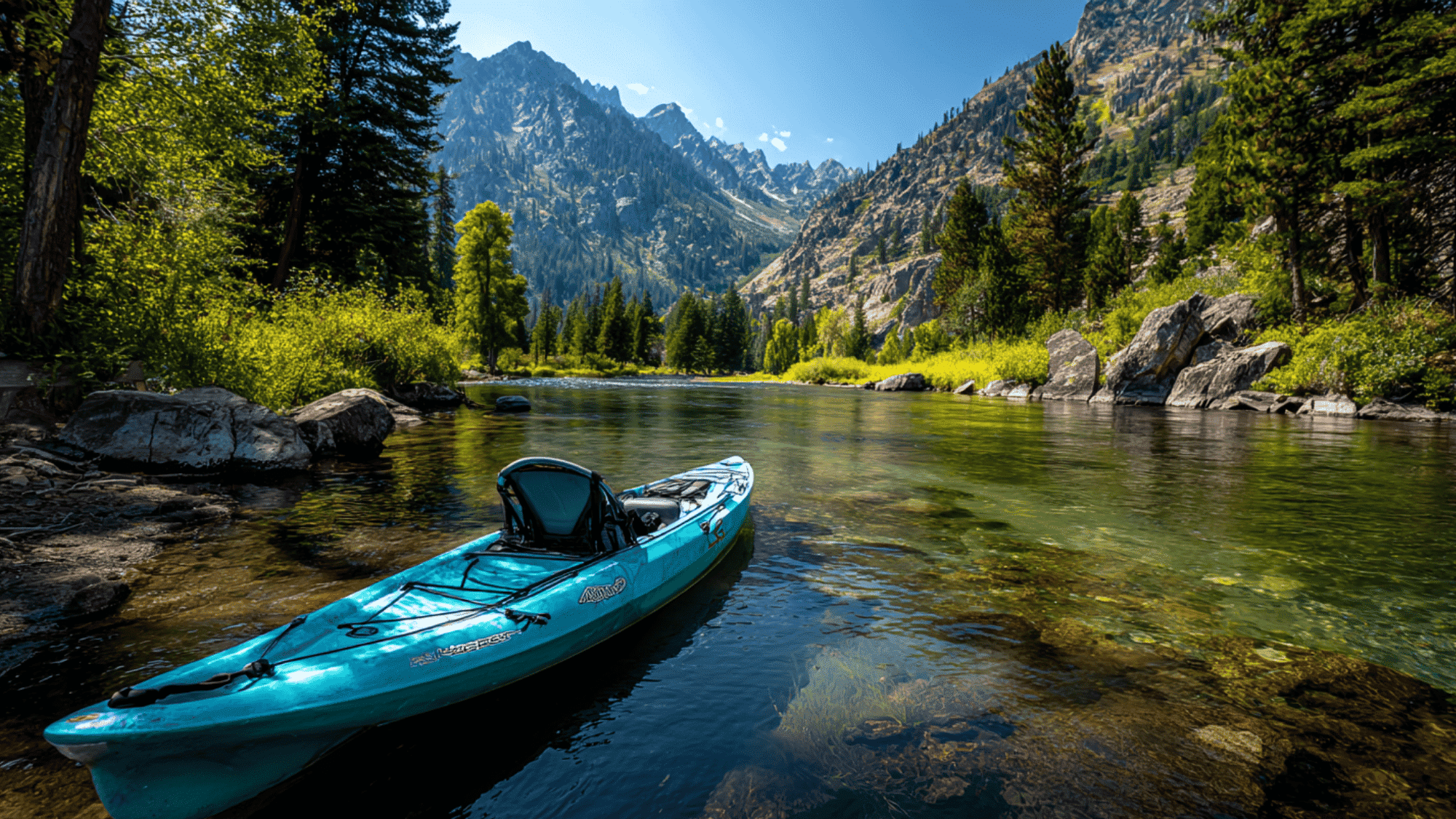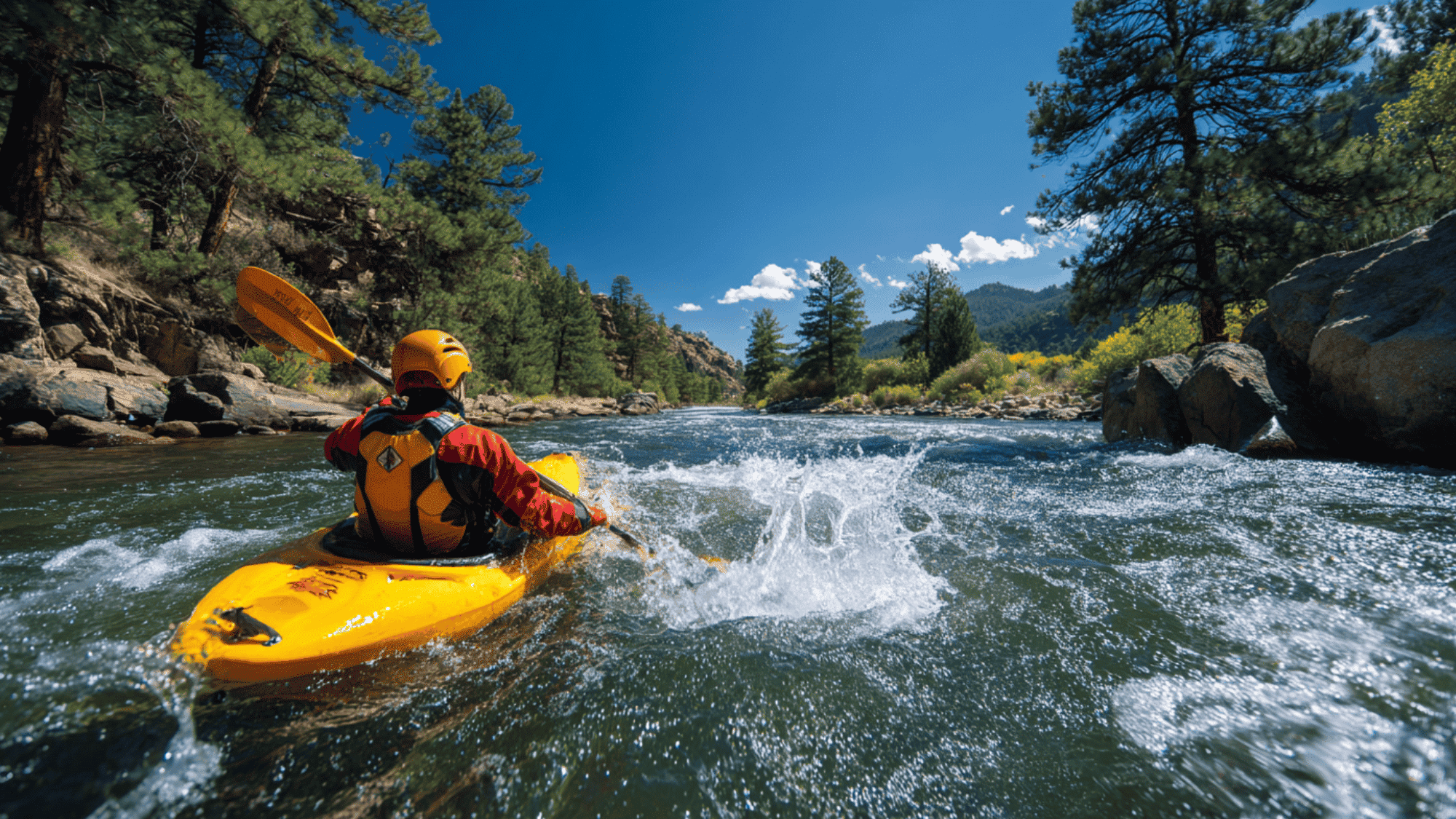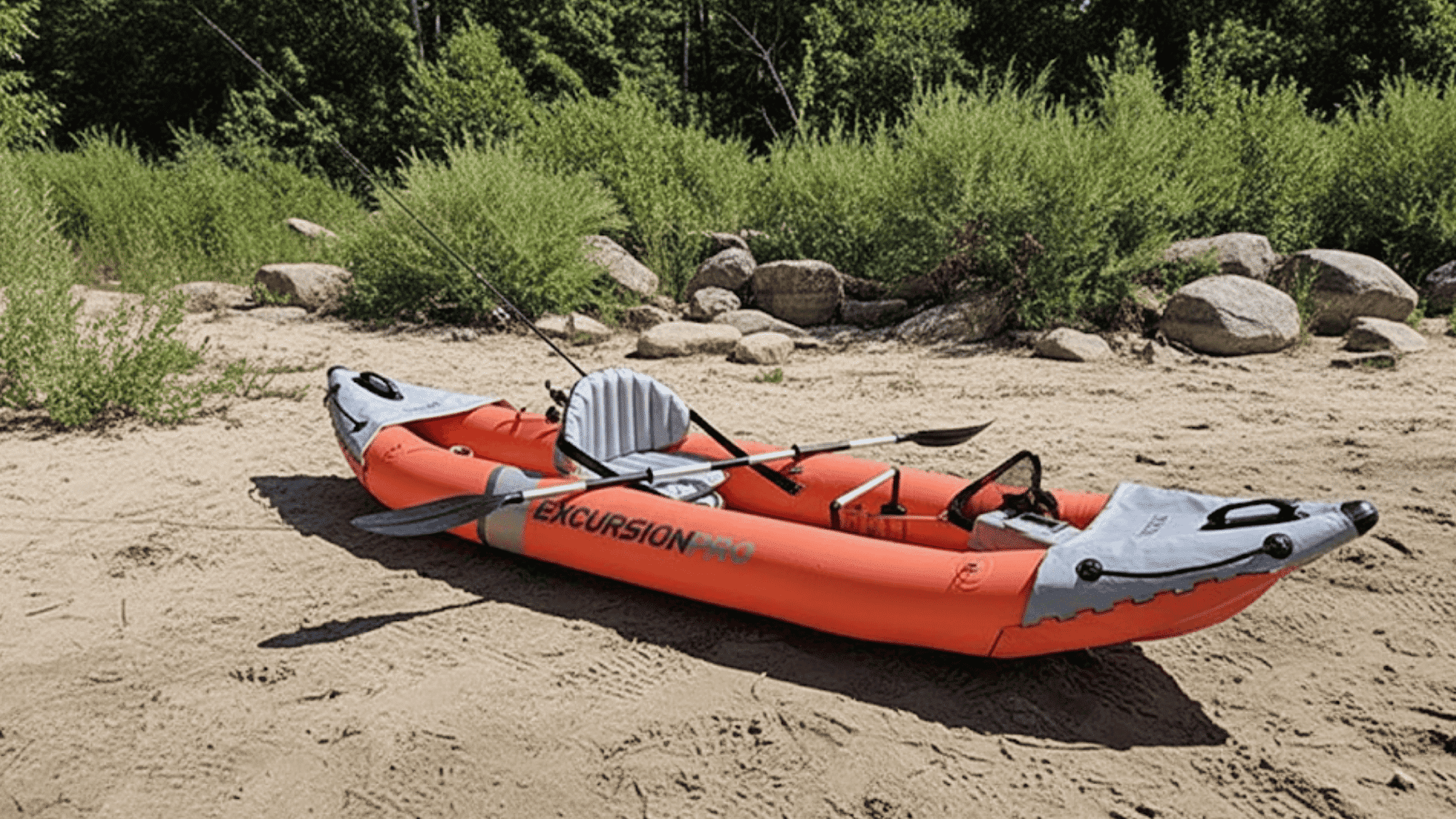Thinking about hitting the water but stuck on the paddle board vs kayak debate? These two popular water sports might look similar, but they offer completely different experiences on the water.
If you’re dreaming of a peaceful morning paddle or an exciting workout session, choosing between a paddle board and kayak can feel overwhelming.
But both options are fantastic ways to explore lakes, rivers, and coastlines.
We will break down everything you need to know about paddle board vs kayak differences, from ease of learning to transportation needs, helping you make the perfect choice for your water experiences.
What are Paddle Boards and Kayaks?
Paddle boards and kayaks are both popular water sports equipment, but they work very differently.
A paddleboard, also called a SUP (stand-up paddleboard), is a large, flat board that you stand on while paddling with a single long paddle. Think of it like surfing, but you use a paddle to move forward instead of riding waves.
Kayaks are narrow boats where you sit inside or on top, using a double-ended paddle to move through the water. Paddle boards come in different styles, like all-around boards for beginners, touring boards for long distances, and inflatable boards for easy storage.
Kayaks include recreational models for casual paddling, touring kayaks for longer trips, and fishing kayaks. The main difference is simple: you stand on paddle boards but sit in kayaks.
Paddle Board vs Kayak: Key Differences
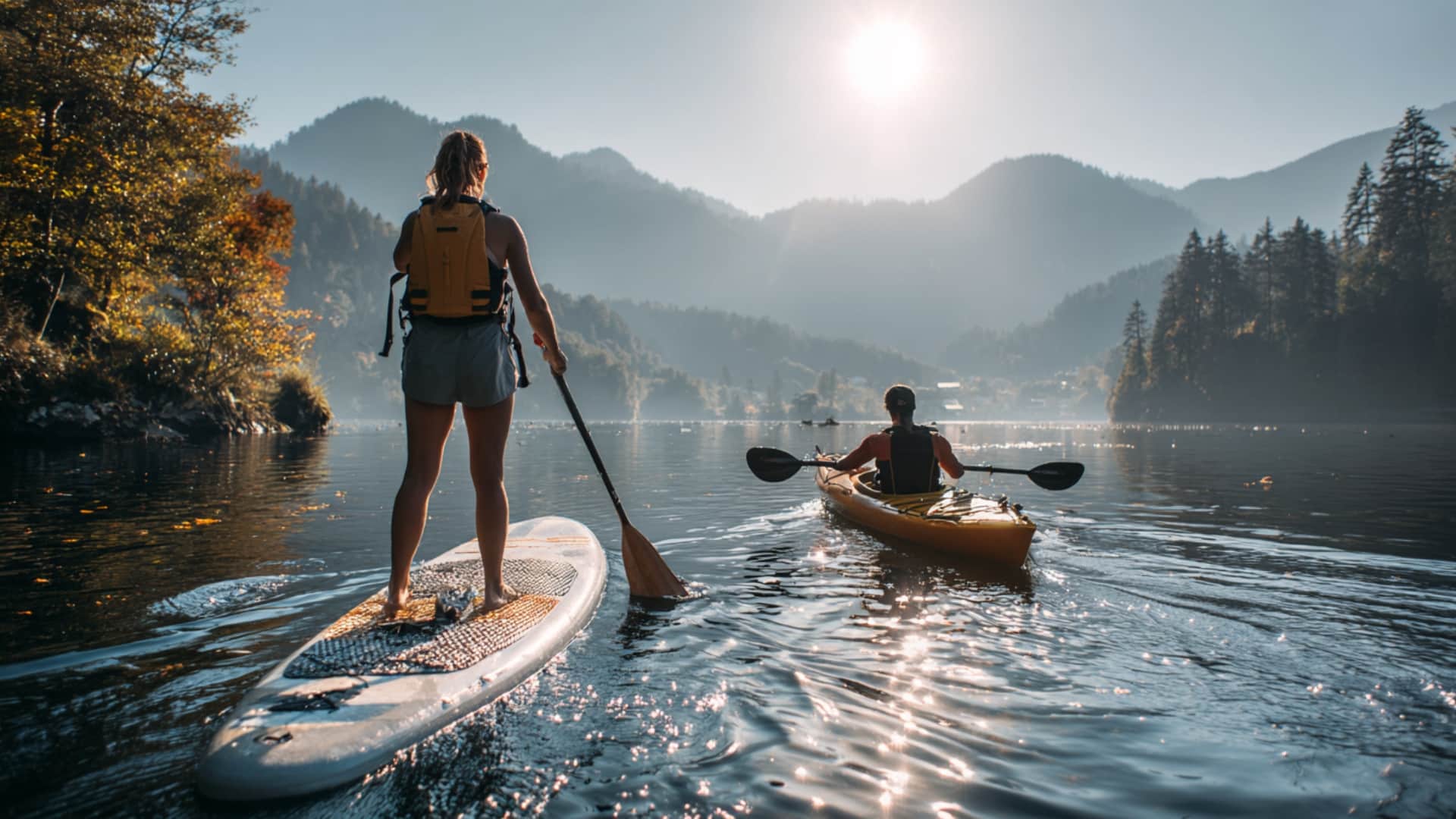
Choosing between a paddleboard and a kayak depends on understanding their key differences. These two water sports offer completely different experiences that will affect your time on the water.
1. Design and Structure
Paddle boards are wide, flat platforms designed to keep you on top of the water. They’re usually 10-12 feet long and very wide for stability. Kayaks have a hull shape that cuts through water, with a cockpit where you sit.
Some are sit-inside models that surround your body, while sit-on-top kayaks let you sit on the surface. The paddleboard’s flat design feels like standing on a floating platform.
2. Stability and Balance Required
Standing on a paddleboard requires good balance and core strength, especially for beginners. You need to engage your muscles constantly to stay upright. Kayaks offer much more stability because you sit low in the water.
Most people can hop in a kayak and paddle right away without worrying about falling in. Paddleboarding has a steeper learning curve for balance and takes more practice.
3. Paddling Style and Paddle Types
Paddle boards use a single-blade paddle that’s longer than you are tall. You paddle on one side, then switch to the other side. Kayak paddles have blades on both ends and are shorter.
You alternate strokes on each side without switching hands. The kayak paddling motion feels more natural to most people and requires less coordination. Both styles give you a good workout, but in different ways.
4. Maneuverability and Speed
Kayaks are generally faster and easier to control in different water conditions. Their streamlined shape cuts through water efficiently, and the double-blade paddle gives you more power.
Paddle boards are slower but offer better visibility since you’re standing up. Kayaks turn more easily and handle wind and waves better. However, paddle boards let you see underwater and spot wildlife more easily.
5. Storage and Transportation
Inflatable paddle boards pack into a backpack when deflated, making them easiest to store. Solid paddle boards need roof racks, but are lighter than most kayaks.
Kayaks require more storage space and stronger roof racks due to their length and weight. Both need car-top carriers, but kayaks are usually heavier to lift and more awkward to carry alone.
Pros and Cons of Paddleboarding and Kayaking
Both paddleboarding and kayaking have their own advantages and challenges. Understanding these pros and cons will help you choose the right water sport for your needs and experience level.
| Paddle Boarding | Kayaking | |
|---|---|---|
| Pros | Great full-body workout and core strength | Very stable and easy for beginners |
| Better visibility to see underwater | Easy to learn basic paddling technique | |
| Fun factor – feels like walking on water | Good cargo space for gear and supplies | |
| Works well in calm, flat water | Faster speed and better maneuverability | |
| Cons | Requires balance and takes practice | Heavy and harder to transport |
| Slower speed than kayaks | Limited movement – you’re stuck sitting | |
| Difficult in windy or choppy conditions | Can feel cramped on longer trips | |
| Higher chance of falling in water | Requires roof racks and a strong car |
Consider your fitness level, transportation options, and where you plan to paddle when weighing these factors. Both activities let you enjoy water, but your preferences will determine the best fit.
Which Is More Fun? Real Users Experiences
The best way to understand which activity is more enjoyable is to hear from people who’ve tried both. Here’s what real paddlers are saying about their experiences with paddle boards and kayaks.
“The SUP is a great form of exercise. They’re a lot of fun in the right conditions. They’re simple & reliable.” SailingAnarchy
“If you just want to play around your boat then sure a SUP is a good toy, but if you want a back‑up to your dinghy or want to explore for a couple of hours and carry some provisions (or your dog)… then an inflatable kayak is a good choice.” CruisersForum
“I just bought an inflatable stand-up paddle board with a clip-on seat to double as a kayak and I love it. I actually sold my kayak because the SUP can be used for both and I can haul it so much easier.” Reddit
These real experiences show that fun depends on what you want to do on the water. Some people love the workout and simplicity of paddleboarding, while others prefer the practicality and stability of kayaking.
Paddleboard vs Kayak: Which One Is Right for You?
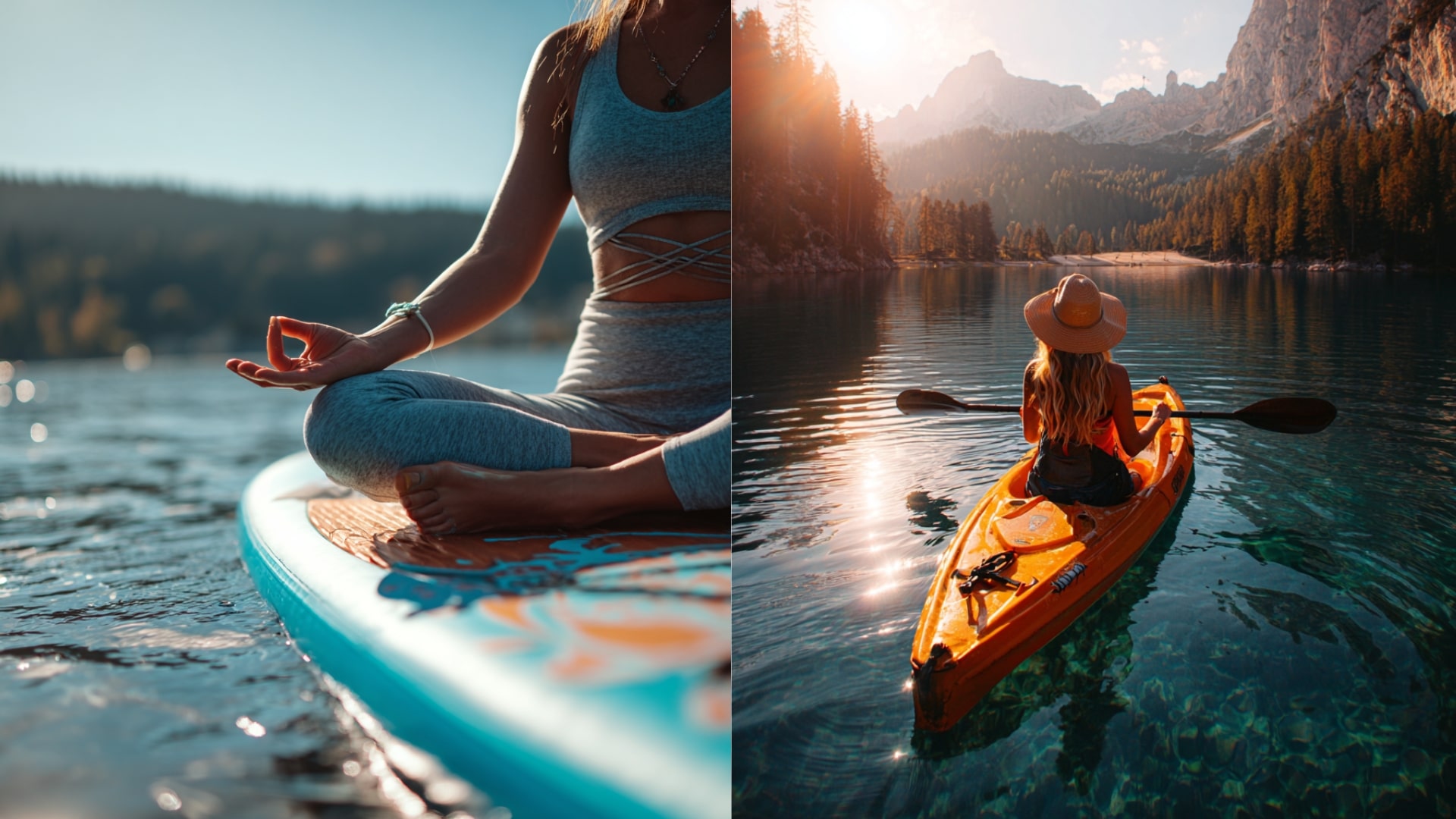
Choosing between a paddle board and kayak comes down to your personal needs and preferences. Ask yourself these key questions to find the perfect fit for your water experiences.
- Fitness level: Pick paddle boarding for a workout. Choose kayaking for easier exercise.
- Balance: Go with a kayak if you worry about falling. Try paddle boarding if you have good balance.
- Water Conditions: Paddle boards need calm water. Kayaks handle choppy conditions better.
- Storage: Choose inflatable paddle boards for limited space. Pick kayaks if you have roof racks.
- Purpose: Pick paddle boarding for fitness. Choose kayaking for longer trips and gear.
Remember, there’s no wrong choice – both activities are fun ways to enjoy the water. Consider renting both types first to see which one feels more comfortable and matches your style before buying.
Final Thoughts
The paddle board vs kayak decision ultimately comes down to your personal preferences and goals.
If you want a full-body workout and don’t mind practicing your balance, paddle boarding might be your perfect match. If you prefer stability, speed, and easy learning, kayaking could be ideal.
Remember, there’s no wrong choice – both offer amazing ways to connect with nature and stay active on the water. Many people even end up loving both activities!
Ready to make your decision? We’d love to hear which option you’re leaning toward – drop a comment below and share what’s drawing you to paddle boarding or kayaking!


